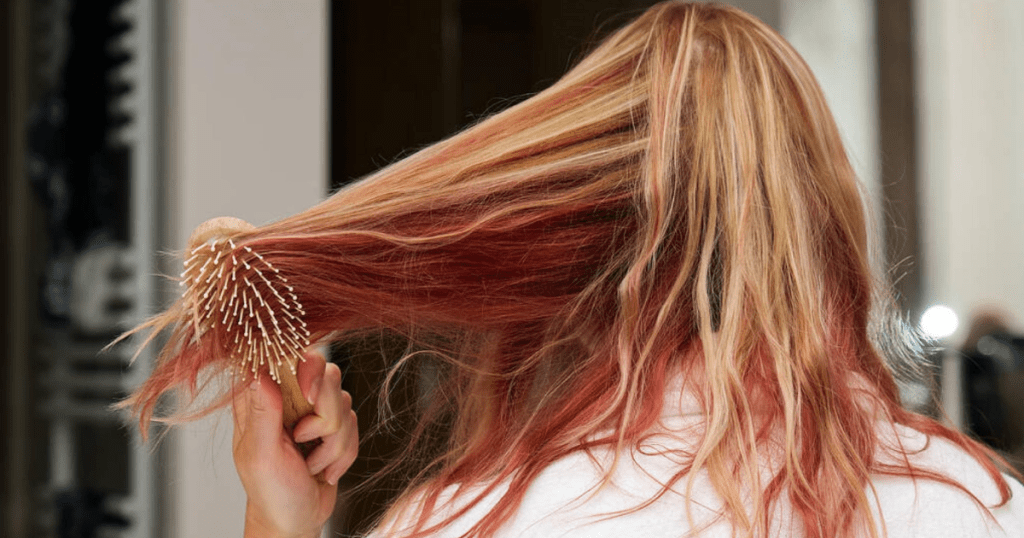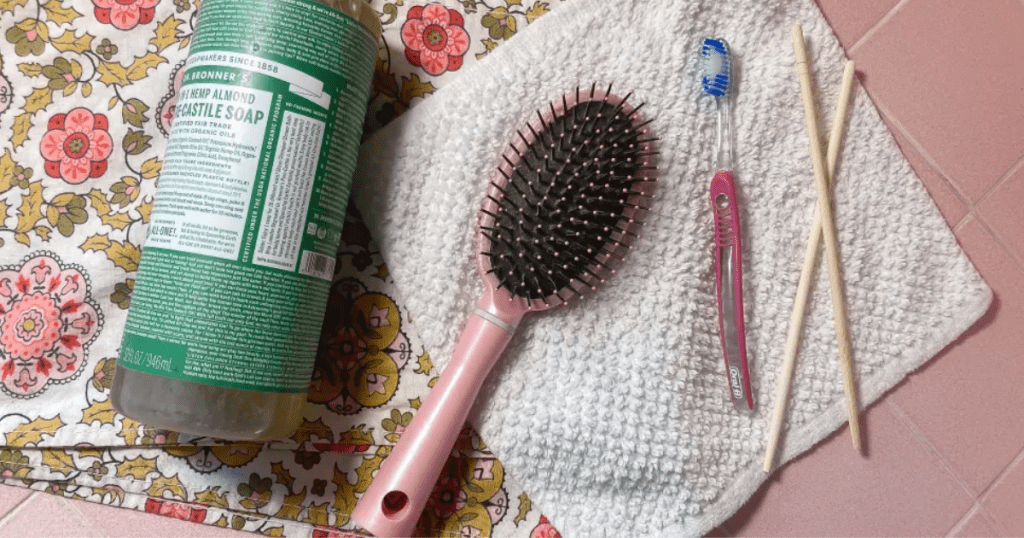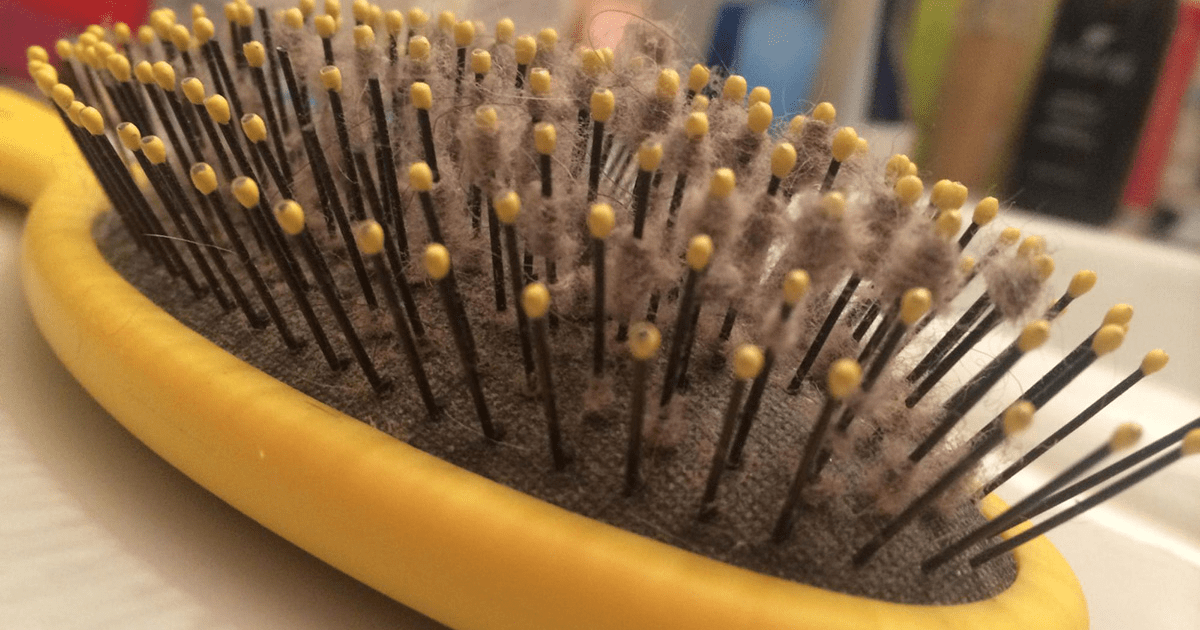Lint refers to tiny fibers, debris, or particles that can get caught or tangled in the hair. It’s associated with fabrics, such as cotton or wool that shed tiny fibers. When these fibers come into contact with hair, they can cling to it and become entwined, creating what’s known as lint in the hair. Lint in hair is standard and can be more noticeable in certain hair types, textures, or colors.
Have you ever wondered why is there lint in my hair? If not, in this blog, I will explain that lint in hair can be a common occurrence and that it may appear in your hair for several reasons. It could be because of oil, dust, or fabric particles that get stuck in your hair. But then, there are several other reasons you might need to learn.
Particulate matter in the environment, such as dust, debris, and other particles, can adhere to the scalp, hair, or roots. These particles can combine to form what’s referred to as lint, which can present itself as a wool or cotton-like fabric. Lint in your hair can be a result of several factors. Here are a few possible reasons.
What Is Lint?
Lint in my hair refers to tiny particles or fibers that get tangled or stuck in the hair, similar to how lint can collect on clothing. Lint particles are lightweight and can attract to the hair due to static electricity or other factors. They can range in size and color but are small and often appear as tiny fibers or specks in the hair.
It removes lint from hair by combing or brushing the hair to dislodge the particles. It’s important to be gentle to avoid damaging or breaking the hair. Using a wide-toothed comb or a brush with natural bristles can help prevent further tangles or damage.
Is It Normal To Have Lint In Your Hair?
Yes, it is normal to experience hair lint. Everyone depending on the qualities of hair, scalp, and surrounding environment are all prone to varied levels of shedding of cells, sebum, hair, and products that can lead to hair lint. There are steps that we can take, as well as products that are used to minimize its occurrence.
Hair lint worked to minimize it, as it is a potential health risk. It increases the risk of bacterial growth on brushes and can harm the scalp, hair follicles, and hair strands. To reduce hair lint, clean and maintain your brush.

What Causes Hair Lint?
The lint in my hair creates many problems. Hair lint is a common yet complex occurrence caused by several different factors. It results from the combination of sebum, dead skin cells, old hair, and product residue from the scalp. As such, it is easy to mistake it for dandruff. Dandruff causes severe scalp dryness, while lint results from the natural shedding of dead skin cells trapped within the strands of your hair.
This mixture of exfoliated cells and sebum from the hair follicles further contributes to the accumulation of lint and dead hair. Hair often breaks and falls out at varying lengths, creating a matted ball of fur and sebum. When it’s brushed, dead skin cells result in the lint that accumulates in the brush. Repeated use of styling products like heat protectants, moisturizers, and more can build up on the scalp.
How Do You Get Rid Of Hair Lint?
I will explain some solutions if you worry about why is there lint in my hair. Getting rid of hair lint can be frustrating, but it doesn’t have to be! There are several simple ways to rid yourself of hair lint. The first step is to remove the lint by hand or with a lint brush. This method removes lint from clothing without damaging the fabric. An adhesive lint roller that’s used to pick up lint and small debris. These rollers are easy to use and catch hairs that other methods can’t.
After you have picked up the visible lint, the next step to keep clothes lint-free is to use a washing machine. The lint filter in the device that’s designed to catch any lint left behind, preventing it from sticking to clothing during the wash. After machine-washing items, drying them in a clothes dryer on a low heat setting can help to avoid further lint buildup. Using these simple steps, you can rid clothing, furniture, and other items of hair lint.
Cleaning Your Hair Brush
Cleaning it by removing all the accumulated old hair is essential. He sanitizes the brush to kill any bacterial growth. To clean a hairbrush, first, remove all excess hairs. Then, to complete the job, fill a bowl with warm water and a small amount of shampoo, and swish the bristles through the solution to sod them. Afterward, scrub around the hairs using a toothbrush with some of the same shampoos. Finally, use an aerosol sanitizing hand spray to finish the job, and let the brush dry overnight bristles down.

Combing Out Lint
Once working surfaces are clean, a fine-toothed comb that’s used to section and remove lint from scalp hair. Starting at the root, brush down the hair strand, collecting and disposing of any lint that may appear. Repeat with each section of hair until the entirety of the scalp comb through. Grab a lint comb or roller and prepare the fabric on a flat surface to remove lint. With the comb, stroke in one direction, using short, quick movements. If using a roller, press and roll it back and forth to pick up the lint.
Wash It Out
To prevent hair lint, washing your hair with an all-natural, clarifying shampoo is essential. For thick hair, try sectioning it and cleaning it from the scalp down twice for optimal results. Follow up with a moisturizing conditioner, keeping it away from your scalp to reduce product buildup.
How To Prevent Lint?
One way to prevent lint is to maintain your clothes and materials. Before washing clothes, empty pockets and fasten all zips or buttons. Then separate the clothes into two piles: one for light-colored garments and one for dark-colored clothes. Laundering at a low temperature with gentle detergents can also help reduce lint. When drying, use a mesh laundry bag or low heat settings to prevent clothes from shrinking or producing lots of lint. Placing paper towels in the dryer can also help capture most of the lint.
Use a lint brush or rubber gloves to remove lint from fabric, such as quilts, sofas, and curtains. Regular grooming can reduce the amount of lint in the house for pet owners. Vacuum your carpets and furniture to suck up the lint. Hang clothes to dry outside, as the wind will help blow away the lint. Replacing or cleaning your lint trap will keep your dryer and clothes free of lint.
FAQ’s
How does lint end up in my hair?
Lint can end up in your hair through various means. It can transfer from your clothing if you wear fabrics that shed.
What is lint?
Lint refers to tiny fibers accumulating on various surfaces, including clothing, furniture, and hair.
Does hair color affect the visibility of lint?
The visibility of lint can vary depending on your hair color. Lint is more noticeable on dark-colored hair compared to light-colored hair.
Can lint be a problem for people with short hair?
Lint can collect on any hair length, it might be less noticeable or less likely to become entangled in short hair than in longer hair.
Can frequent hair brushing reduce lint accumulation?
Brushing your hair with a clean brush or comb can help remove loose lint particles. That prevents them from getting tangled or accumulating further.
Conclusion
After reading this blog, you can now understand why is there lint in my hair. Lint is often present in our surroundings and can get caught in our hair. Fabrics, such as towels, bed sheets, clothing, and upholstery, can shed tiny fibers that resemble lint. These fibers can become airborne and settle in your hair if you spend significant time in areas with lint-prone materials or environments.
Certain hair care products, such as styling gels, hairsprays, and leave-in conditioners, can sometimes leave residue in your hair. This residue can attract lint and other particles, making them stick to your hair strands. It’s essential to wash your hair and scalp to remove any product buildup, as this can help reduce the likelihood of lint accumulation.
Static electricity can also contribute to lint sticking to your hair. When hair becomes charged with static electricity, it attracts lightweight particles like lint. Dry weather conditions, certain fabrics, or friction between materials can increase static electricity. Consider using a moisturizing hair product, a humidifier in arid environments, or anti-static sprays to minimize static and reduce the likelihood of lint clinging to your hair.








